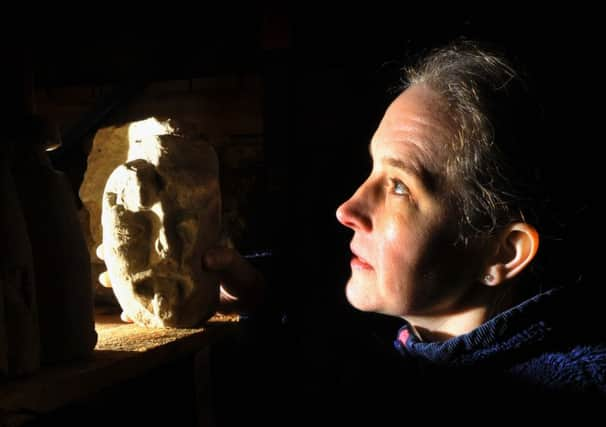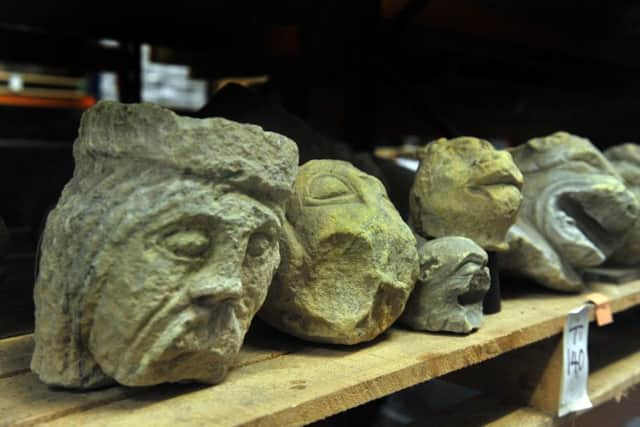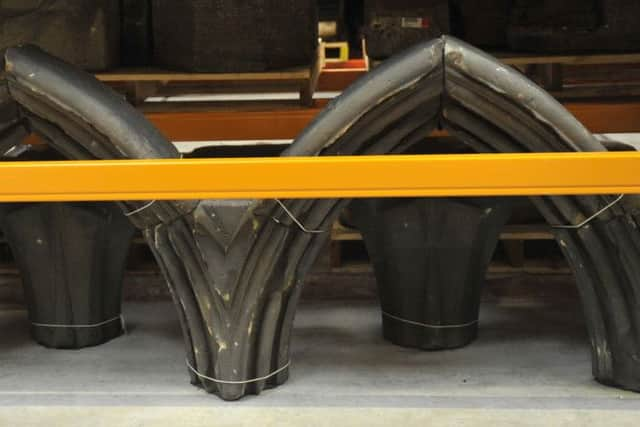Cannonball run


The answer, as far as the north of England is concerned, lies on the edge of the pretty little Yorkshire market town of Helmsley. Hidden away behind a modern housing estate lie two vast purpose-built commercial storage units where a team of professionals look after and catalogue every last artefact.
The territory it covers is vast. It goes from Hadrian’s Wall in the north to the Derbyshire border. In effect, it takes in about a quarter of England and around 400 English Heritage sites in total. Susan Harrison, who is the collections curator at the store, explains that the sites can range from the “lumps and bumps” of prehistoric burial sites to ruined abbeys and castles to Victorian piles like Brodsworth Hall. Added to the mix – and English Heritage’s most recent acquisition – is York’s very own Cold War bunker.
Advertisement
Hide AdAdvertisement
Hide Ad“We span English history,” says Susan, who was brought up in Thirsk and who still lives nearby. “There are a quarter of a million items in the store, and each has an accession number. Find that number in the file, and then you can easily find the object stacked neatly on one of the pallets.


“We’ve got boxes of beakers, and others with bits of bone. There are fragments of tiles. Plenty of small finds as well as the big and bulky ones. Each is cared for and conserved according to its needs. Some will sit quite happily exposed to the air. Others have to be wrapped and treated differently. Metal is always a problem because that needs protection from moisture and potential rust, so we place that in airtight boxes with special gel. But the store itself is secure, there is no dust – we vacuum around a lot – and we try to keep humidity to a minimum.”
Every single item has its own story to tell, and each one, from the small gargoyles to the magnificent tomb effigy of Henry Percy, the first Lord of Alnwick, adds a little more to our knowledge of the past.
“Carved from Magnesian limestone, it’s incredibly detailed – there are even carved stitch-marks on the hems of the tunic – and it must have taken a mason at least a year to finish,” says Susan. “And he had to deal with flaws in the stone as well as making it one of the most accurate pieces of stonework ever. In today’s terms, it is a monument which would set you back well over a million pounds. In historical terms, it is without price.”
Advertisement
Hide AdAdvertisement
Hide AdWhile much of Henry Percy’s life is well documented, there are other pieces in the store which give just a glimpse of people whose lives were much less chronicled. Susan is fascinated by another tomb slab, this time from Thornton Abbey, which has an image carved into the surface.


“We can see that he is a monk, because he has a tonsure, and we have part of an inscription, which tells us that he was called Ricardi and that he died in 1317. But what makes him really remarkable is that there are traces of paint on the surface. His marker wasn’t plain, not at all, it was very highly coloured, which must mean that Ricardi was definitely a man of some status at the abbey. Maybe the abbot, perhaps?”
Susan says many of the medieval statues and memorials were simply toppled when Henry VIII ordered the Reformation and the dissolution of the monasteries. Walls were knocked down, niches emptied. Stained glass was smashed beyond repair, and shards littered the ground. Stone was carted away to construct other buildings in what Susan calls “the most basic recycling”.
There’s one statue in the collection, maybe of Christ, or possibly one of the apostles, which once stood over the main door of a church. The figure bears the marks of an axe or broadsword and looks as though it was hacked down.
Advertisement
Hide AdAdvertisement
Hide AdAcross the aisle are some of the arches from the cloister at Monk Bretton Priory, in Barnsley. In a heap, they look nothing of any real import. In fact, when they were re-assembled and placed as they would have originally been, we can see that they would have been pretty ostentatious and elaborate.


“It is the architectural way of showing off,” adds Susan. “There are so many questions that get prompted by some stonework – like who influenced them to create this, and where did they get the money from? Sometimes we find the answers, other times we have to leave it to those who come after to put the bits of the jigsaw into place. It could happen in a few years, it may take decades of further scholarship. Or we may never ever get the full picture”.
Susan studied history of art at the University of East Anglia, specialising in pre-12th century Anglo-Saxon stone. She is now regarded as one of the best experts in the world in that particular field and she sees herself as a guardian of the various artefacts who will at some point pass on the responsibility to another custodian. “The store exists purely and simply because Yorkshire and the North is so rich in artefacts from across the centuries and the millennia that there simply is not the space to display it all to the public. What a visitor to our galleries, museums and exhibitions will see is just the tip of a gigantic iceberg.
“Take Rievaulx Abbey, which is a place I love with a passion. More than 10,000 separate objects have been rescued from the ruins there and just a small fraction of them could find a home in the newly opened museum facility. For that I had to choose about 300 objects which told the Rievaulx story, and there are another 300 tiles in the visitor centre. That means there are more than 9,000 items now in store. Some objects can’t be shown because of their sheer size, or simply because they are far too heavy.”
Advertisement
Hide AdAdvertisement
Hide AdThere are three full-time English Heritage staff in Helmsley, along with several trusted volunteers, and the entire collection is available to scholars and researchers at all times – if they get in touch and make an appointment. But it is also accessible to the general public, for there are seven open days every year, where parties of up to 20 are given a guided tour. And historical or archaeological societies from the region are also given access if they pre-book.


So does Susan have a favourite artefact? “I love them all,” she says. “Strangely, I seem to spot different things on different days, and I am always discovering something that I haven’t noticed before, but then I’ve got an awful lot to choose from, haven’t I?”
For details on the tours scheduled for 2017 go to english-heritage.org.uk. Booking is essential.